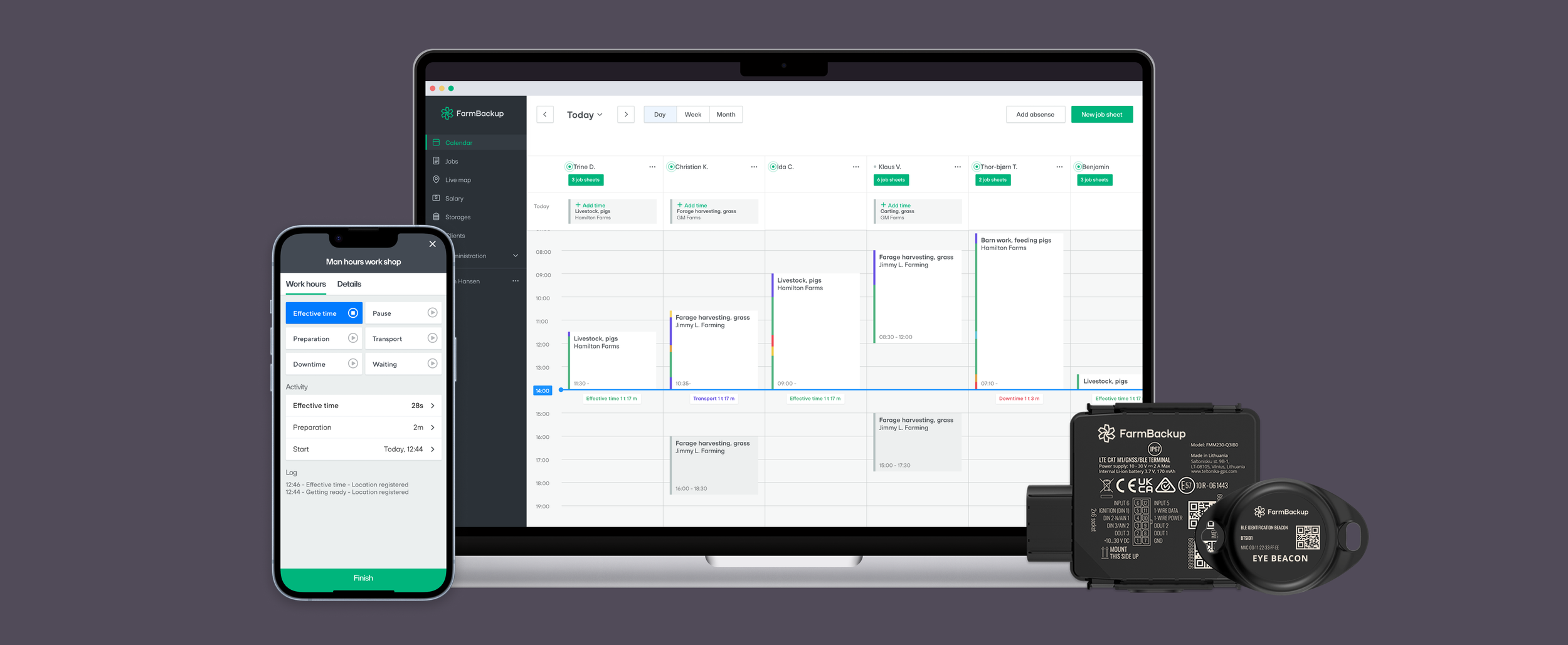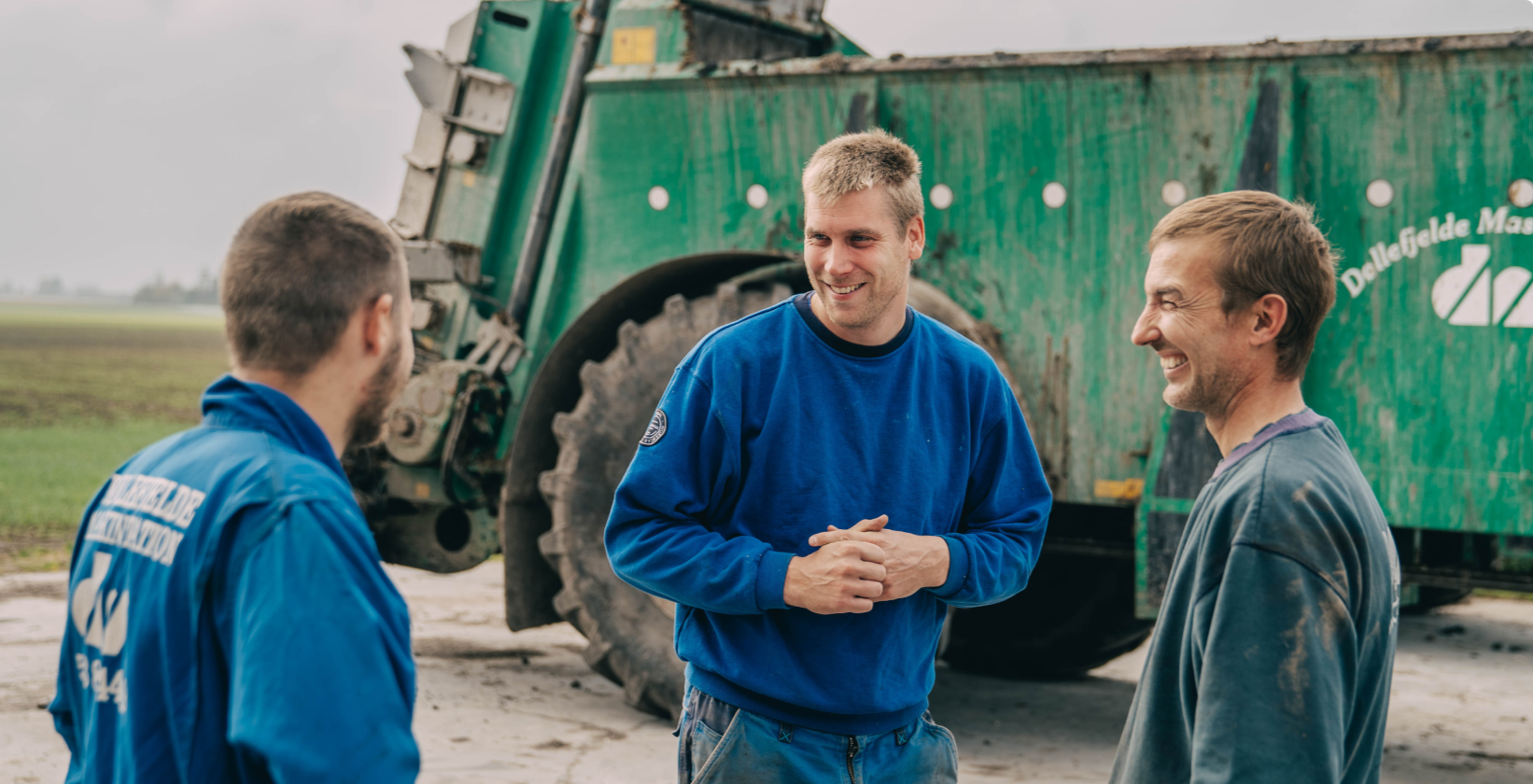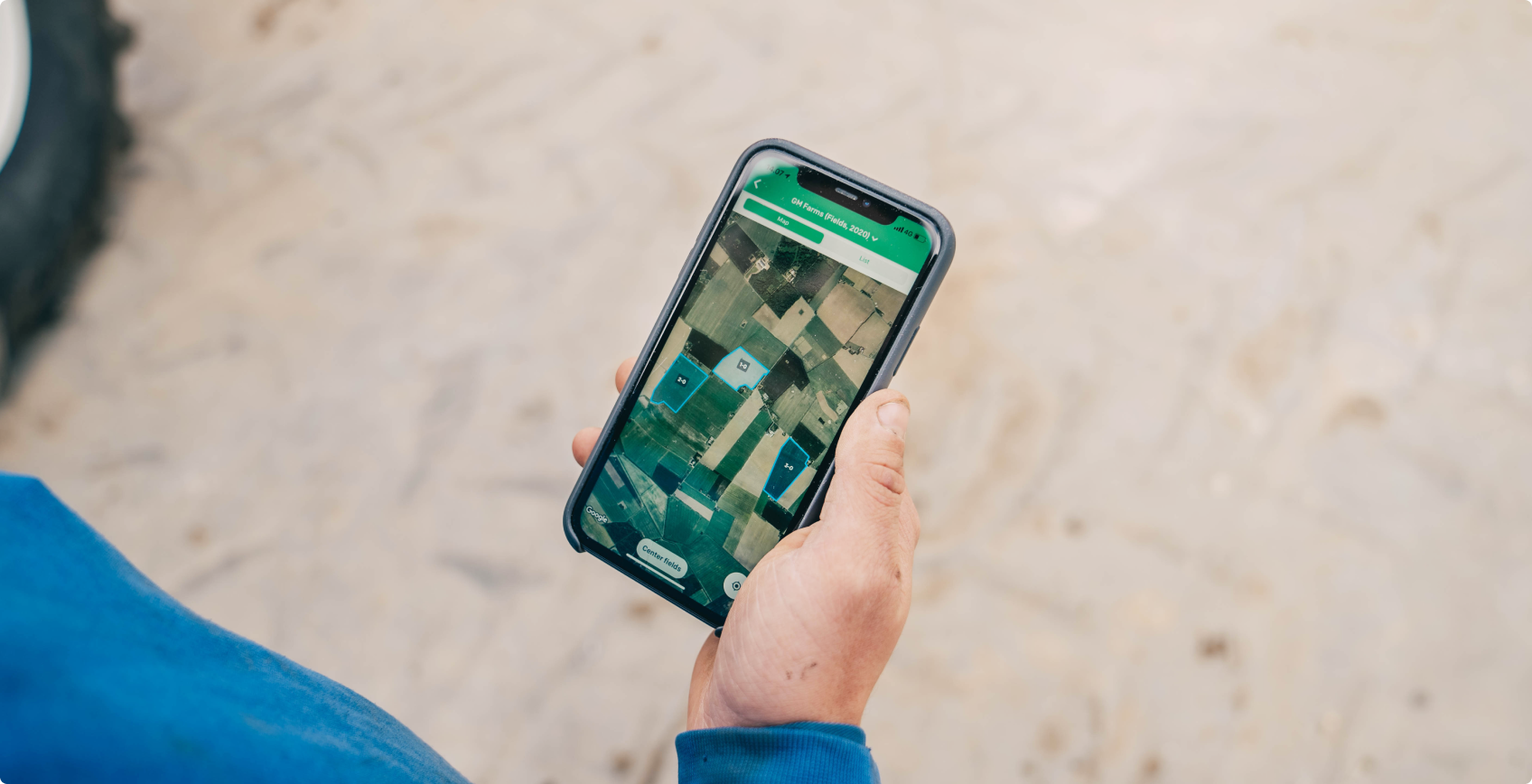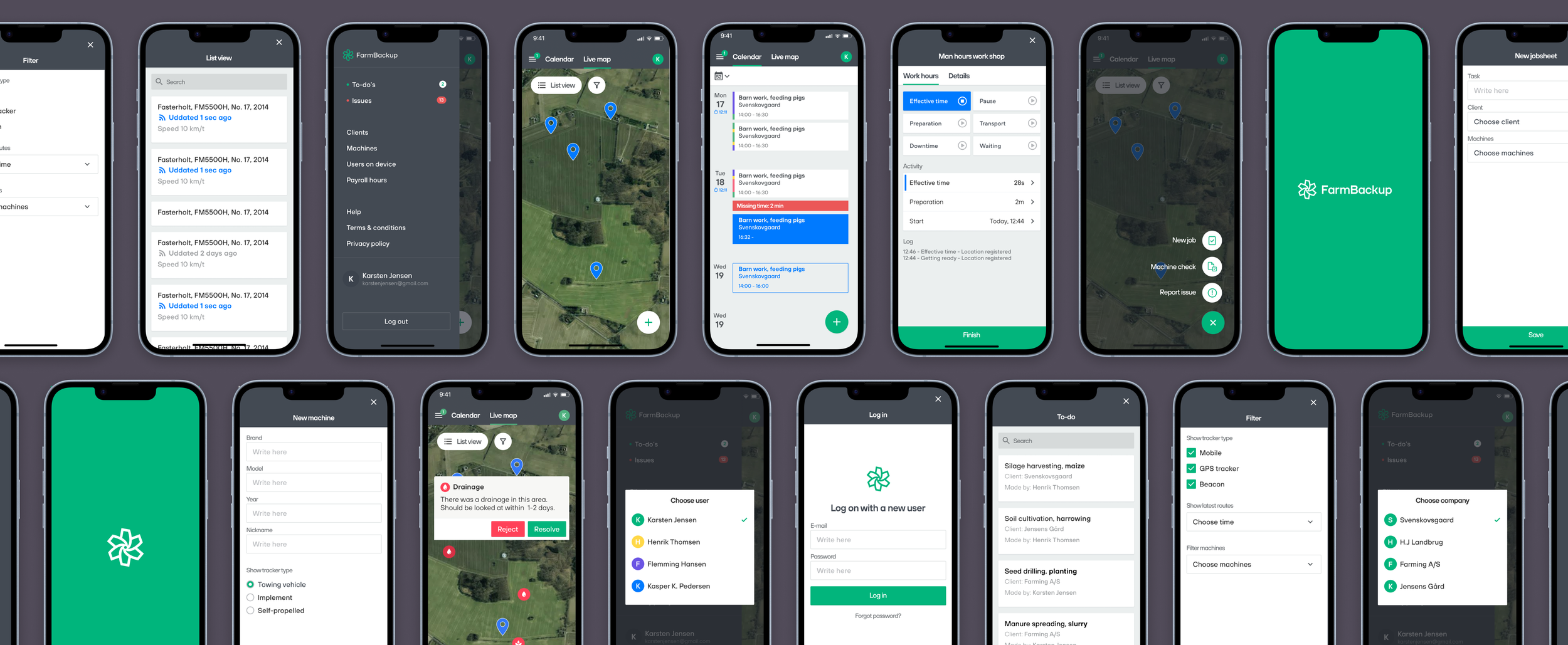
Simplifying the daily operations of farmers through thoughtful design and clear systems
Project challengeCompany
FarmBackup A/S
Role
Lead Product Designer
Timeline
Ongoing
Focus
Design system, UI/UX, branding
Tools
Figma, AE, PS, Jira, Zeplin
Team
2 founders, 2 developers & 1 designer
FarmBackup is a platform built to simplify the everyday life of farmers and contractors. By connecting planning, tracking, and management into one clear interface on desktop and mobile, it turns complex operations into intuitive digital workflows.
As Lead Product Designer, I helped evolve the product’s experience, visual identity, and design system, creating a unified foundation for growth.
FarmBackup had quickly grown from a simple GPS tracking tool into a multifunctional platform used by both farmers and contractors.
The existing UX and UI were fragmented and outdated, and many of the workflows still mirrored manual processes from the physical job sheets users relied on before.
The challenge was to modernize and unify the experience, while keeping it simple and accessible for a diverse, non-technical user group.
ChallengeTo design a clear and cohesive user experience that simplifies complex daily tasks and saves time in the field.
At the same time, to establish a refreshed brand identity and design system that could scale with new features and maintain visual consistency across the platform.
GoalDesign system evolution
I led the redesign of FarmBackup’s brand and interface, and built a new design system in Figma, defining color, typography, components, and interaction patterns to support future growth.
The system made collaboration between design and development smoother and ensured that new features could be built quickly and consistently.
This foundation also helped elevate the product’s visual quality, giving it a modern and professional feel that matched the value it provided.
Design system evolutionUX foundation and system
The UX improvements focused on giving users a clear overview and reducing manual work.
I designed a new job planning flow with an intuitive calendar view, making it easier for farmers and contractors to assign and monitor tasks in real time.
A new live GPS map allowed users to track both machines and workers as jobs progressed, while safety check workflows helped ensure compliance and accountability in the field.
Additionally, I developed tools for managing storage and crop sales, creating better transparency across the entire operation.
Together, these improvements created a unified experience that turned disconnected, paper-based workflows into a digital rhythm that mirrored the way users actually work.
UX HighlightsDesktop highlights
The interface design is grounded in core UX principles such as cognitive load reduction, visual hierarchy, and clear affordances, all tailored to a user group that is highly skilled in fieldwork but not necessarily in digital systems. The result is a system that balances clarity, usability, and modern aesthetics, while meeting users exactly where they are in terms of digital experience.
App highlights
The mobile experience is designed around the realities of fieldwork, fast decisions, limited attention, and frequent context switching. Every screen is optimized for clarity under real-world conditions, using principles from mobile ergonomics, glanceability, and task-oriented interaction.
Reflections
Designing FarmBackup was a rare opportunity to work closely with users whose needs are practical, time-sensitive, and far from traditional digital workflows.
The project strengthened my ability to simplify complexity, not by reducing functionality, but by shaping it into patterns that match how people actually work in the field.
I learned the value of involving users early and continuously, and how much clarity comes from close collaboration with domain experts. The project also reinforced the importance of designing for confidence: clear hierarchy, direct feedback, and interfaces that guide rather than overwhelm.
More than anything, this case deepened my understanding of what “usable” truly means. It’s not about polished UI alone, but about creating tools that feel natural, intuitive, and reliable for people whose real work happens far away from the screen.
Key learningsNext case










